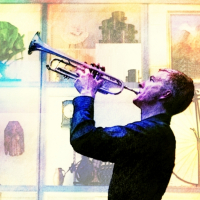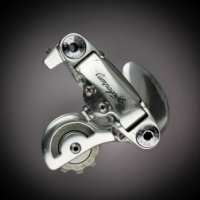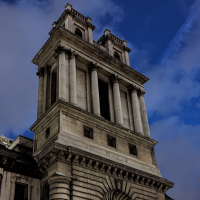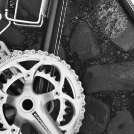Photography Thread
Comments
-
I'll give you a photo instead. I'm not sure what the 'subject' was, but the seagull was definitely a poser.Pinno wrote:briantrumpet wrote:
Even more exciting, when I right click on the no entry sign, and "view image", I still get to see the no entry sign, but bigger!Pinno wrote:Typical. BT gets a no entry sign and all I get is.[Image].
Rub it in why don't you. :roll: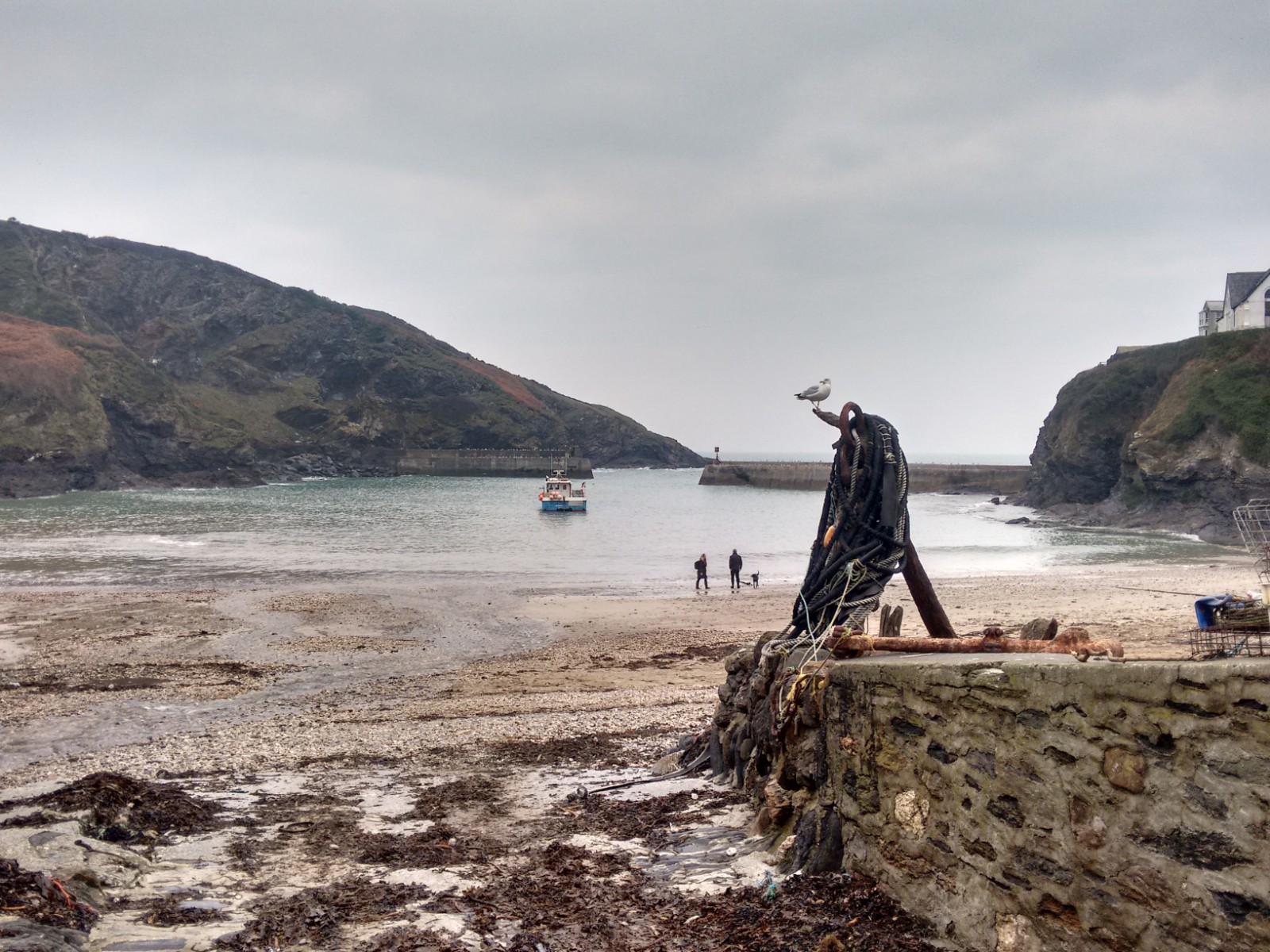 0
0 -
Cornwall?seanoconn - gruagach craic!0
-
Yes. Port Isaac. I was early for a concert rehearsal at St Endellion, so took a little diversion to get some food from the Co-op there. You can tell that my life is full of excitement.Pinno wrote:Cornwall?0 -
I thought so - Doc Martin!seanoconn - gruagach craic!0
-
Ah :oops: I see. I appear to have err... I'll just fix that.
Hope this works
If that still doesn't work:
https://goo.gl/photos/LjmEFF78q1qrkPCL61985 Mercian King of Mercia - work in progress (Hah! Who am I kidding?)
Pinnacle Monzonite
Part of the anti-growth coalition0 -
 The above may be fact, or fiction, I may be serious, I may be jesting.
The above may be fact, or fiction, I may be serious, I may be jesting.
I am not sure. You have no chance.Veronese68 wrote:PB is the most sensible person on here.0 -
PBlakeney wrote:Something slightly different.

Like. Nice and abstract.Ben
Bikes: Donhou DSS4 Custom | Condor Italia RC | Gios Megalite | Dolan Preffisio | Giant Bowery '76
Instagram: https://www.instagram.com/ben_h_ppcc/
Flickr: https://www.flickr.com/photos/143173475@N05/0 -
rjsterry wrote:Ah :oops: I see. I appear to have err... I'll just fix that.
Hope this works
If that still doesn't work:
https://goo.gl/photos/LjmEFF78q1qrkPCL6
I love the light on the buildings. I find the framing a bit distracting - a crop might help.Ben
Bikes: Donhou DSS4 Custom | Condor Italia RC | Gios Megalite | Dolan Preffisio | Giant Bowery '76
Instagram: https://www.instagram.com/ben_h_ppcc/
Flickr: https://www.flickr.com/photos/143173475@N05/0 -
The horizontal top step accentuates the perspective of the buildings which makes the background feel it's moving downhill and the converging paralux of the window frame is always disconcerting when you only see one of the angles, looking up and not being able to use the lens parallel to the 'subject' works better for more abstract images as our own world view is not then brought into question which makes the viewer uncomfortable, uncomfortable is not necessarily 'complete garbage' though
 my isetta is a 300cc bike0
my isetta is a 300cc bike0 -
Thanks for the comments - knew there was something amiss, but couldn't put my finger on it. I've tried cropping it to simplify things, which I think works a bit better - losing the resolution, though.team47b wrote:The horizontal top step accentuates the perspective of the buildings which makes the background feel it's moving downhill and the converging paralux of the window frame is always disconcerting when you only see one of the angles, looking up and not being able to use the lens parallel to the 'subject' works better for more abstract images as our own world view is not then brought into question which makes the viewer uncomfortable
EDIT: One last go at cropping this down, which I think would work if the resolution were higher and the rainbow a bit brighter.1985 Mercian King of Mercia - work in progress (Hah! Who am I kidding?)
Pinnacle Monzonite
Part of the anti-growth coalition0 -
This would have been my interpretation. Hope you don't mind.
The converging verticals are still a little off putting. Pity the rainbow doesn't really show up. The above may be fact, or fiction, I may be serious, I may be jesting.
The above may be fact, or fiction, I may be serious, I may be jesting.
I am not sure. You have no chance.Veronese68 wrote:PB is the most sensible person on here.0 -
Not at all, and I think you're right. One to file under didn’t quite work.1985 Mercian King of Mercia - work in progress (Hah! Who am I kidding?)
Pinnacle Monzonite
Part of the anti-growth coalition0 -
I guess the potential is the contrast of the stairwell which provides a frame and the warmth of the light on the buildings. I would have taken 30 plus shots from up a step, down a step, up two steps, in, out landscape/portrait and see if I captured a really good one.
Mid November, I looked out of the back window and the light was a deep Bronzeish gold colour that seemed to come in horizontally. It lit the top of the neighbours shed as well as some leaves and created this wonderful contrast of warm coloured sunshine and the cold greys in a plethora of geometric lines created by the washing line, the fences and the shape of the shed. I ran to get my camera knowing that the light was fleeting but in the end, taking the pic through glass and the difference between my eye and the picture was deflating to say the least. Here it is, slightly blurred and just lacking something. The shed is too small and the area of light is diminutive - not what I saw
I have given up trying to replicate what I see and what the camera will do, after all, the eye is infinitely more complex than a camera lens.
That sounds naive in retrospect. Anyway, 3 shots over Ullswater, don't know which is the better of the 3.


One from Ambleside. It's not quite right: seanoconn - gruagach craic!0
seanoconn - gruagach craic!0 -
Pinno,
I'd pick number 3, and boost the contrast somewhat.The above may be fact, or fiction, I may be serious, I may be jesting.
I am not sure. You have no chance.Veronese68 wrote:PB is the most sensible person on here.0 -
Agreed. I think the scale of the tree branches sits more comfortably with the texture of the mountainside behind. I think the issue with the last picture might be that it feels a bit off balance with the brightness of the sun right on the edge of the frame.PBlakeney wrote:Pinno,
I'd pick number 3, and boost the contrast somewhat.1985 Mercian King of Mercia - work in progress (Hah! Who am I kidding?)
Pinnacle Monzonite
Part of the anti-growth coalition0 -
How did y'all learn about photography - both the technical aspects of taking good pictures and the more artistic aspects of composition, criticism, etc? Courses, books, website, trial and error, ....?
I've always been interested and have dabbled a bit in an unstructured way, but never feel as though I have got beyond a pretty basic understanding of it all, and knowing what I like when I see other people's work.0 -
An extreme close up of a document.Mr Goo wrote:
Not bad for a 3 year old. She took 4 as she wasn't happy with the first 3.The above may be fact, or fiction, I may be serious, I may be jesting.
I am not sure. You have no chance.Veronese68 wrote:PB is the most sensible person on here.0 -
Lots and lots of trial and error.shazzz wrote:How did y'all learn about photography - both the technical aspects of taking good pictures and the more artistic aspects of composition, criticism, etc? Courses, books, website, trial and error, ....?
I've always been interested and have dabbled a bit in an unstructured way, but never feel as though I have got beyond a pretty basic understanding of it all, and knowing what I like when I see other people's work.
It's so much easier and cheaper these days - having started in the days of trying to eke out 27 prints from a 24-print roll of film, the joy of having unlimited chances to capture a picture, and the instant review of what you've just taken, makes the feedback loop virtually instantaneous and valuable. Add in all the inbuilt software help that modern cameras have (I actually like trying to make a virtue of the most basic point-and-shoot settings), and 'lucky snaps' aren't that elusive, if you keep your eyes open to shapes & light wherever you are. Just because you've passed a place hundreds of times doesn't mean that it won't surprise you one day. I've got a few 'cheap tricks' for framing and light, that can sometimes make what would be a mundane shot a bit more interesting - for instance shooting against the sun, using a tree as a shield, and using trees to give framing or vertical aspect to what would be all horizontal shapes are two of mine, both featured here, from a quick ride on Saturday: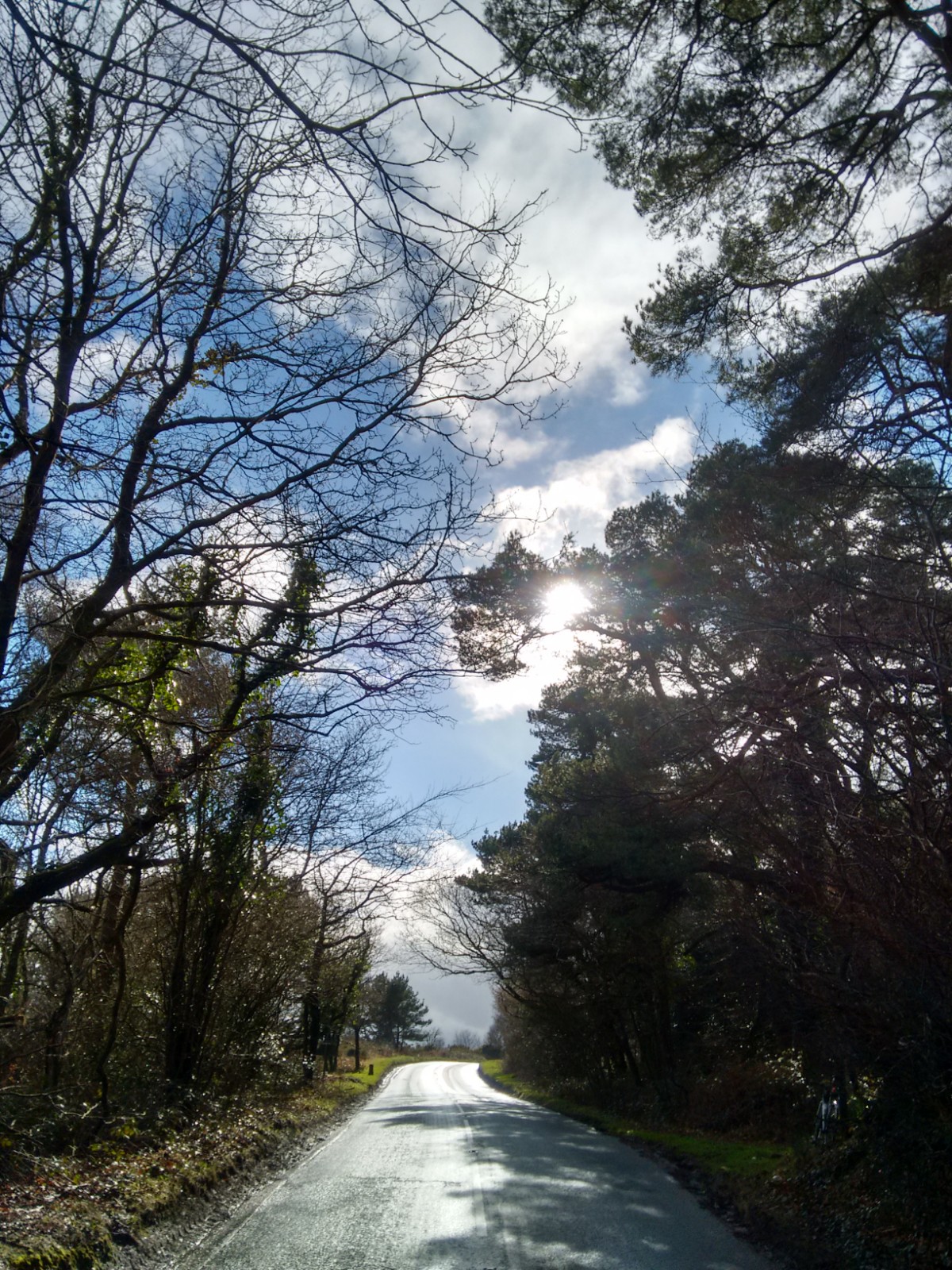
Re the technical aspect - I just leave that to the camera and the software, as it neither interests me, and I'm too lazy. I'd rather be on the bike with my eyes open for another shot. I might manipulate the odd image slightly (cropping, perspective, exposure), but mostly it's just point-and-shoot. And once in a while I get lucky, in my amateur way.0 -
Both parents are keen amateurs so taking photos was just a normal thing to do. An art & design foundation course gave me a basic overview of the b&w film photography (digital was around but expensive and limited at that point in time) but actually, the life drawing classes on that course were probably more useful in terms of learning to 'see'. Since then, it's just been trial and error. Actually, as gratifying as getting a really good shot is, I think you learn far more from picking apart why the duff ones don't work.shazzz wrote:How did y'all learn about photography - both the technical aspects of taking good pictures and the more artistic aspects of composition, criticism, etc? Courses, books, website, trial and error, ....?
I've always been interested and have dabbled a bit in an unstructured way, but never feel as though I have got beyond a pretty basic understanding of it all, and knowing what I like when I see other people's work.1985 Mercian King of Mercia - work in progress (Hah! Who am I kidding?)
Pinnacle Monzonite
Part of the anti-growth coalition0 -
With my pupils, I always say that I'm much more interested in the mistakes and the things they can't do: as much as we all like the good stuff and the things that go right, they don't tell you anything about understanding how you got it to that point.rjsterry wrote:Actually, as gratifying as getting a really good shot is, I think you learn far more from picking apart why the duff ones don't work.0 -
shazzz wrote:How did y'all learn about photography - both the technical aspects of taking good pictures and the more artistic aspects of composition, criticism, etc? Courses, books, website, trial and error, ....?
I've always been interested and have dabbled a bit in an unstructured way, but never feel as though I have got beyond a pretty basic understanding of it all, and knowing what I like when I see other people's work.
I learned about the technical aspects through reading - either real life books or online.
Composition - well you'll see even in this small selection of photos in this subforum, that has caused some debate. There are some "rules" when it comes to composition (again this is all online, but you also need to have a feel for it), but it's fun breaking the rules now and then. Isn't it?
Criticism? Too subjective to comment, in my opinion. I love the work of Daidō Moriyama, but I'm sure others consider it too grainy, oddly framed and obscure.
I'd advise you to go out and just take photos of things you like the look of - buildings, scenes, shapes, abstractions... bikes? There is much more than meets the eye, in every frame.
Then for technical content, learn about: aperture; shutter speed; ISO; the exposure triangle; depth of field; depth of focus; white balance; rule of thirds...
Googling any of those terms will probably take you to pages discussing all of them and many others. Don't get too bogged down though!Ben
Bikes: Donhou DSS4 Custom | Condor Italia RC | Gios Megalite | Dolan Preffisio | Giant Bowery '76
Instagram: https://www.instagram.com/ben_h_ppcc/
Flickr: https://www.flickr.com/photos/143173475@N05/0 -
Oh, and add in "take risks". Don't be a slave to convention (though when you take risks you might also learn why some conventions are conventions). All part of learning.0
-
Step 1. Learn the rules.
Step 2. Learn when to break them. Simply reiterating points already made. :oops:The above may be fact, or fiction, I may be serious, I may be jesting.
I am not sure. You have no chance.Veronese68 wrote:PB is the most sensible person on here.0 -
PBlakeney wrote:Step 1. Learn the rules.
Step 2. Learn when to break them. Simply reiterating points already made. :oops:
Worth repeating though.Ben
Bikes: Donhou DSS4 Custom | Condor Italia RC | Gios Megalite | Dolan Preffisio | Giant Bowery '76
Instagram: https://www.instagram.com/ben_h_ppcc/
Flickr: https://www.flickr.com/photos/143173475@N05/0 -
Hmm, to a point, though the use of the word 'rules' implies restriction, when we should be more discovering what is possible. The language matters: a nervous learner is unlikely to take risks, and the risks are the key to discovery.Ben6899 wrote:PBlakeney wrote:Step 1. Learn the rules.
Step 2. Learn when to break them.
Worth repeating though.0 -
Digital cameras allow the user to take lots of shots, have a look at them at home on a PC/tablet etc and discard all of them - there's no risk and you tend to stumble on a good shot by default more than design. I'll now take a half dozen shots of the same scene from a slightly different angle or distance. I've now found i'm taking 50 shots and maybe 1 or 2 will be good but no one will see the not so good one's.seanoconn - gruagach craic!0
-
Indeed so, though practice will, over time, increase the strike rate of 'lucky ones'. One of my professional photographer friends has found it increasingly difficult to 'monetize' his undoubted skills: at one time, when it was all film and processing, the range of skills and cost of producing prints/slides meant the amount of 'practice' most people did kept them very much out of the professionals' league, but the ability to take hundereds of photos, see the results while you're still looking at the object/scene, and adjust on the spot, mean that the distance between a pro and a good amateur is far less than it once was. Having said that, another pro friend, who does wedding and high-end property photography, virtually weeps when he looks at the quality of photos taken by estate agents trying to save money by doing it themselves. Stuff like this does take specific skills, way beyond my point-and-shoot amateurism: http://www.fullfatphotography.com/property/Pinno wrote:Digital cameras allow the user to take lots of shots, have a look at them at home on a PC/tablet etc and discard all of them - there's no risk and you tend to stumble on a good shot by default more than design. I'll now take a half dozen shots of the same scene from a slightly different angle or distance. I've now found i'm taking 50 shots and maybe 1 or 2 will be good but no one will see the not so good one's.0 -
Snapped this yesterday when out for a walk, mainly for the colour, but I like the alignment/grid structure created by the moon and the concrete dam overflow and the repeated lines of the hill and the dam bank

Was going to call this 'a winter's day' but that's cruel my isetta is a 300cc bike0
my isetta is a 300cc bike0 -
You're not posting what you think is a good pic, you're just trying to wind people up.
Nice pic BTW. Could have lost a bit more of that concrete though.seanoconn - gruagach craic!0
